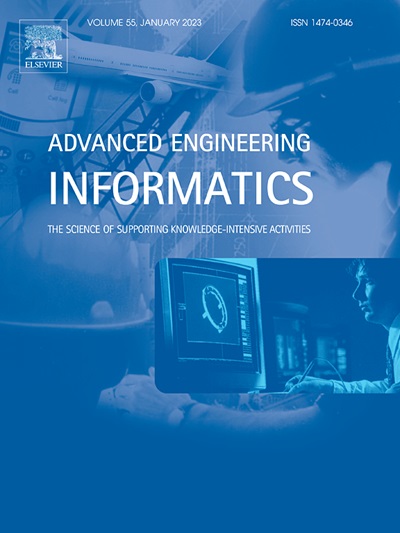Optimising predictive accuracy in sheet metal stamping with advanced machine learning: A LightGBM and neural network ensemble approach
IF 8
1区 工程技术
Q1 COMPUTER SCIENCE, ARTIFICIAL INTELLIGENCE
引用次数: 0
Abstract
This article presents an innovative ensemble model that integrates advanced machine learning techniques to enhance the precision of sheet metal stamping processes. By combining a light gradient boosting machine (LightGBM) with deep neural networks (DNNs), the model achieves high accuracy in predicting the final geometry of stamped sheet metal parts, and proactively identifies potential deviations to guarantee strict compliance to geometrical tolerances. In a comprehensive evaluation based on diverse performance metrics, the ensemble model demonstrates substantial improvements over the individual models, achieving a high coefficient of determination R2 of 0.951. Significantly, an extensive dataset derived from finite element method simulations is found to facilitate the training of our models in a variety of stamping scenarios, giving superior generalisability and reliability in terms of predictions. In addition, the integration of the ensemble model into an interactive web platform for real-time predictive analytics underscores its practical application in manufacturing settings, as it can optimise decision-making and operational efficiency. The predictive power of the ensemble model and its integration into a real-time framework provide a solid foundation for further advancements in developing a digital twin of the sheet metal stamping process. Our findings highlight the transformative potential of combining diverse machine learning techniques to revolutionise manufacturing processes, thus ensuring higher quality, adaptability, and cost efficiency.
求助全文
约1分钟内获得全文
求助全文
来源期刊

Advanced Engineering Informatics
工程技术-工程:综合
CiteScore
12.40
自引率
18.20%
发文量
292
审稿时长
45 days
期刊介绍:
Advanced Engineering Informatics is an international Journal that solicits research papers with an emphasis on 'knowledge' and 'engineering applications'. The Journal seeks original papers that report progress in applying methods of engineering informatics. These papers should have engineering relevance and help provide a scientific base for more reliable, spontaneous, and creative engineering decision-making. Additionally, papers should demonstrate the science of supporting knowledge-intensive engineering tasks and validate the generality, power, and scalability of new methods through rigorous evaluation, preferably both qualitatively and quantitatively. Abstracting and indexing for Advanced Engineering Informatics include Science Citation Index Expanded, Scopus and INSPEC.
 求助内容:
求助内容: 应助结果提醒方式:
应助结果提醒方式:


